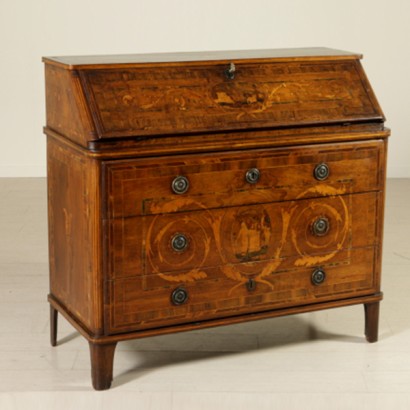Classical Spotlight
Features
Style: Neo-Classical (1765-1790)
Age: 18th Century / 1701 - 1800
Origin: Italy
Main essence: Walnut
Material: Solid Maple , Solid Walnut , Burl , Solid Olive
Description
Classical Spotlight attributable to the Piedmont area to form and structure, lombarda for fittings and in Piacenza for inlays. It has three drawers with inlaid centered with mythological scene and spirals. The lift system conceals scarabattolo with four drawers and retractable central door, inlaid with reserve landscape presents and spirals. Inlays and threads in toppo.
Product Condition:
Requires the restoration and revival of polishing.
Dimensions (cm):
Height: 110
Width: 118,5
Depth: 53
Additional Information
Notes historical bibliographic
The type of inlay on the front of the Cabinet, for technique and model, can be found in-The mobile Longheri and Susanna Pighi piacentino-Carla and I. PLE.CO from 295 to 308 page page.Style: Neo-Classical (1765-1790)
This historical period includes a first phase that can be properly defined as the Louis XVI style.nOnly at a later time, with the maturation of archaeological fashions, was a new vision of furnishing civilization formulated and codified, now fully attributable to the Neoclassical Style.
In fact, both trends coexisted in unison until the last years of the eighteenth century.
nIn the field of cabinet making, the Directoire, Retour d'Egypte, Consular and Empire styles also fall within the neoclassical era.
nFind out more about Neoclassicism with the insights from our blog...
n


































